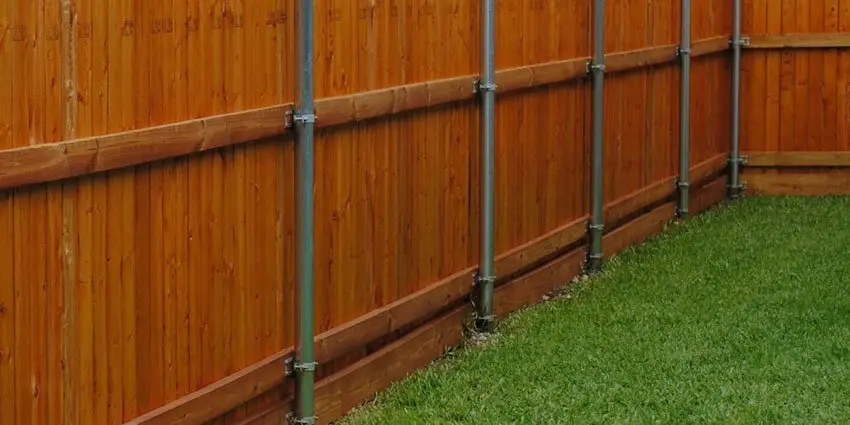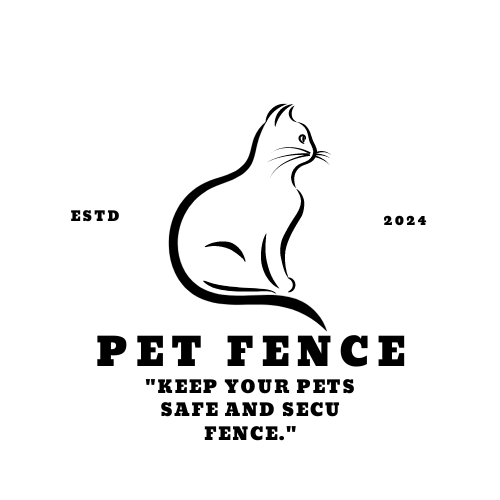Fence Builders Inc. offers a variety of fencing materials including wood and metal (ornamental and chain link fence). But what suits your property? Here are some things to consider:
The advantages of the wooden fence Wooden or metal fence
Wooden fences have been a popular choice for years and there are several reasons for this. Wood is a natural material and therefore fits well with most landscape designs. A wooden fence can last for many years if properly cared for.
The disadvantages of wooden fences
One of the biggest disadvantages of a wooden fence is that it requires more maintenance than other fencing materials. It is important to regularly stain or paint wooden fences to protect them from the elements. Otherwise, it may rot and fall apart over time.
Wooden or metal fence The advantages of metal fencing
When we choose metal fencing from Fence Builders Inc., we use aluminum fencing and steel fencing. In addition, they are available in a variety of colors and styles, so you can always find an option that suits your aesthetic preferences.
The disadvantages of metal fencing
Although metal fences are very durable, they can be damaged by harsh weather conditions. Metal fences are also more expensive than wooden fences.
The cost of the compared to the Wooden or metal fence
The cost of wood fencing versus metal fencing depends on several factors, including the size and scope of your project.. However, when maintenance costs are factored in, a metal fence
Contact Fence Builders Inc. today. for an accurate estimate of your wood or metal fencing project!
Installation and maintenance of wooden or metal fences
As previously mentioned, wooden fences require more maintenance than metal fences. Wooden fences should be stained or painted regularly to protect them from the elements. Metal fencing, on the other hand, requires very little maintenance. They require no painting or staining and can last for many years with little or no maintenance.
When it comes to installation, wooden fences are usually easier and faster to install than metal fences. However, both types of fences can be installed quickly and efficiently by a professional fencing company such as Fence Builders Inc.

Performance
Their strength allows you to also install larger fences without losing stability.
aesthetics
Metal fence posts come in many colors and styles, so you can customize them to match your fence and landscaping. While some people may think that metal is not as charming as wood, modern design now offers many attractive options, including decorative fence tops.
Disadvantages
Cost
The biggest cost differences between wooden fence posts and steel posts are largely due to material costs and installation costs. Galvanized steel posts have a higher initial cost, but there are no maintenance costs. Typical galvanized steel fences can cost between $30 and $100 each, depending on factors such as size, thickness and brand.
installation
This often requires specialized tools and skills, which may require hiring a professional. This can add to the overall cost and time of your fencing project.
Wooden fence posts
Benefits
Cost effective
Wood is a cheap raw material and is easy to cut and hammer together, while steel is an expensive raw material and you need a professional to cut and install it. A standard pressure treated wood fence post can cost between $10 and $20 depending on size and quality. aesthetics
Wooden post fences give an unbeatable natural and charming look, while galvanized steel fences give a much more modern look. In addition, there are some steel bars that can be hidden. Choosing between these two really just depends on your personal taste and the design of your home. Which style will you choose?
Easy to install
With simple tools and a little knowledge, you can usually do it yourself. This allows you to save on labor costs and gives you the satisfaction of completing the project yourself.
Disadvantages
maintenance
- The Appeal of Wood and Metal Fencing
Wood and metal fences combine the natural beauty of wood with the industrial appeal of metal. This combination not only enhances the visual appeal of a property but also contributes to its functionality. Wood brings warmth and character,
adding a welcoming ambiance, while metal components contribute strength and durability, ensuring the fence can withstand various environmental factors.
Wood and metal fences are highly customizable. Different wood types, such as cedar, pine, or redwood, offer various textures, colors, and durability levels. Likewise, metal components can vary from sleek stainless steel to rugged wrought iron,
each adding a distinct look and feel to the overall design. This mix-and-match approach allows homeowners and designers to create a fence that aligns perfectly with the property’s architecture and landscape.
- Advantages of Wood and Metal Fences
A. Strength and Durability
One of the key advantages of metal fencing components is their resilience. Metal elements, typically used as frames or accents in wood and metal fences, provide a robust structure that resists impact and weather damage. Unlike a purely wooden fence, which may weaken over time due to rot or insect infestation, metal adds a level of durability that enhances the fence’s lifespan. Coated or galvanized metals are particularly resistant to rust and corrosion, further increasing longevity.
B. Aesthetic Versatility
Wood offers a rustic, classic look, while metal provides a modern, industrial feel. Together, they create a visually appealing contrast that complements a variety of home styles, from farmhouse to contemporary. Homeowners can stain or paint the wood in a color that matches the property’s aesthetic, while metal can be customized with powder coatings, finishes, and designs.
C. Low Maintenance
Metal components are relatively low-maintenance, requiring only occasional cleaning and, in some cases, a protective coating to maintain their appearance. While wood does require more upkeep to prevent rot and maintain its color, combining it with metal reduces the overall maintenance burden. The metal framing supports the wood panels, reducing the risk of warping and providing additional stability.
Wooden fence posts, as we mentioned in the first part,
are affected by moisture, weather and natural elements. Even if you only need to repaint the fence every two to five years, you should consider this cost when budgeting for your fence.
sustainability
Fences are exposed to harsh weather conditions such as strong winds and rain, and unfortunately wooden fence posts are not always up to the challenge. Changes in moisture content can cause wooden fence posts to shrink and expand, essentially causing the post to deform.
life
Wooden fence posts generally do not last as long as metal posts. With the right care, the wooden fence can last for 7-15 years, while the steel fence can last up to 30 years.
Make your choice
When choosing between metal and wood fence posts, consider the following important points:
Cost:
Metal is more expensive initially, but saves money in the long run because it requires less maintenance. Wood is initially cheaper, but requires constant maintenance.
Durability:
Metal lasts longer and withstands harsh conditions better than wood, which can rot and be damaged by insects.
Maintenance:
Metal requires little maintenance, while wood requires regular treatment to stay in good condition.
Aesthetics:
Wood has a natural look that many love, while metal offers modern and durable options.
Comparing Metal Fences
When deciding between different types of fences, it’s essential to understand the different types available and their unique advantages.
The type of fence that suits your home best depends on various factors. If you have any questions about wood or metal fencing, or need help choosing the right fence for your needs, contact Fence Builders Inc. today!
Diploma
Now that you understand the differences between metal and wood fence posts, are you ready to begin your fencing project? Call Austin’s top fence contractor Sierra Fence today for all your fencing needs!
Durability: Metal lasts longer and handles harsh conditions better than wood, which can rot and get damaged by insects. Maintenance: Metal needs little upkeep, while wood needs regular treatment to stay in good shape.
Overall, aluminum fence costs vs. wood, long term, are about equal. Having said that, aluminum fence total costs go down substantially over the life of the fence. In fact, maintenance costs for wood can make the long-term cost up to 40% higher!
The most popular type of fence is a wood fence. Solid wood fencing can come in a variety of styles. Beautiful looks such as redwood slats make it the first choice for a backyard privacy fence. A solid wood fence is versatile and graded on the quality of its appearance.
While the metal certainly won’t contract or expand, not measurably at least, the metal does get very hot after hours in the sun. Touching such a hot fence is unlikely to cause serious damage, but it can be uncomfortable, especially if it’s painted black, which will absorb more of the heat from the sun.
